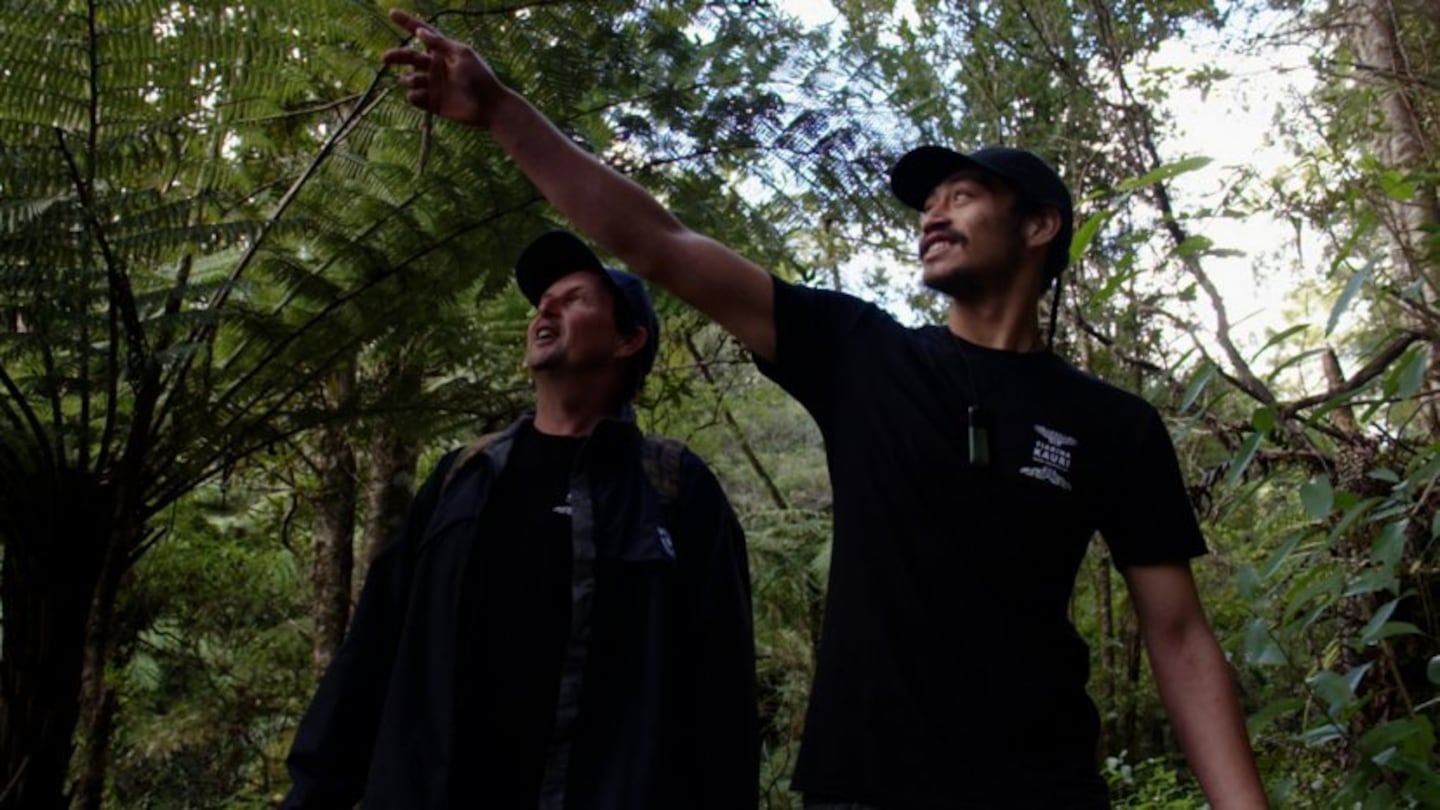Kauri dieback, a fungus that attacks the roots of kauri, is affecting many trees around the country.
But stands of kauri in Manaia in the Coromandel are disease-free and Ngāti Whānaunga and Ngāti Pūkenga ki Manaia iwi are working with the Waikato Regional Council to keep it that way.
“These are not just trees, they are treasures, our older siblings, leaders, and guardians of the forest,” Hautu Martin of the Manaia community says.
Kauri dieback is caused by the microscopic soil-borne organism Phytophthora agathidicida. It affects kauri of any age by infecting and damaging their feeder roots, which cuts nutrients to the trees. Nearly all trees infected with it will die, making stopping the spread of this organism critical.
Manaia community stands up for kauri.
Waikato Regional Council’s Benson Lockhart is raising awareness in the Manaia community and further afield about this disease that can kill the kauri.
The disease is spread by dirt, “so by limiting the spread of dirt that is spread we are protecting these trees,” he said.
Common goal to keep disease out
The reason Martin and his Manaia community have agreed to bring Waikato Regional Council on board to help protect the kauri within the Manaia fand is that they have a common goal to save and protect the kauri.
“The council also has the resources for cleaning boots, such as cleaning stations and mobile cleaning kits,” Martin said.
Today the community is working with Waikato Regional Council to produce a film to promote protecting kauri.
Martin and Lockhart appear in the film and are keen to share with other people in Aotearoa how to take care of kauri around the country. One important topic in it was about cleaning to soil-free, then disinfecting all footwear, gear, machinery, and vehicles before and after leaving kauri areas.
“The importance of cleaning your boots when you go into the bush is crucial because just a tiny little bit of dirt can spread this disease and we want to stop this disease from getting into the Manaia Sanctuary, which is a magnificent stand of trees,” Lockhart said.

Time to give back
Martin said the community was shocked when it learned that, if the disease reached their kauri, there would be mass implications such as the spiritual well-being of the forest being lost, cultural practices, and the tree’s very life-giving essence to other forest living beings. This signalled action from Ngāti Whanaunga and Ngāti Pūkenga to do something about it, hence this film and working with the council.
“We need to think seriously about protecting our kauri. They have looked after us for many years, our ability to build waka to navigate the oceans, rongoa or medicine when we are ill, pigments for moko or tattoo, materials for whare and taonga such as tokotoko or walking sticks. Now it is time for us to give back to them,” Martin said.
The disease has invaded the Northland, Auckland and Waikato regions.
Three infected areas
Waikato Regional Council says over the past 10 years, three areas in Waikato have been infected - Whangapoua, Hukarahi, and Tairua.
Martin hopes that his efforts and those of his community and the council will mean the kauri will still be standing for many years to come, and that his genealogical connection will not be severed from his kauri trees.
The film to promote protecting kauri will be completed by the end of the month.


